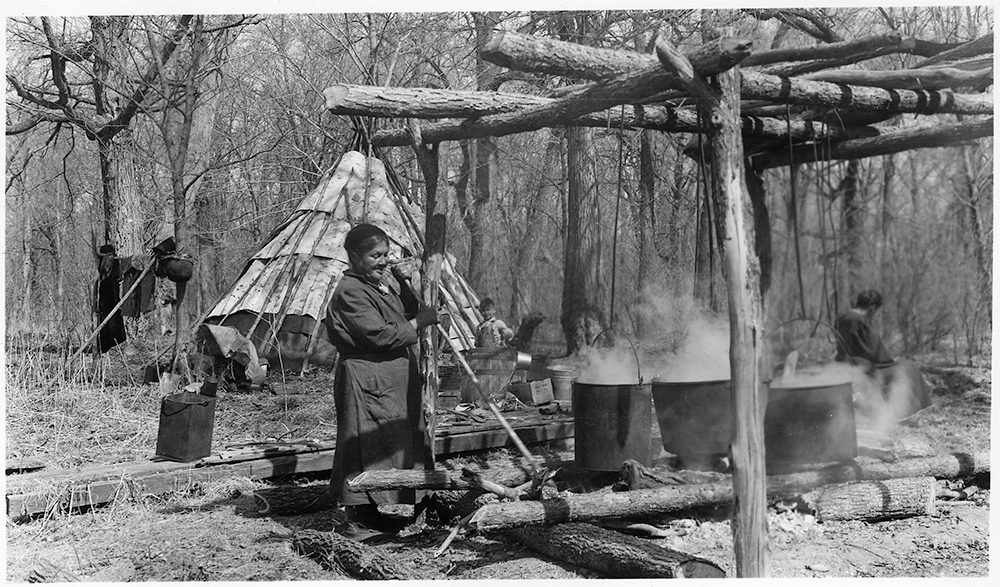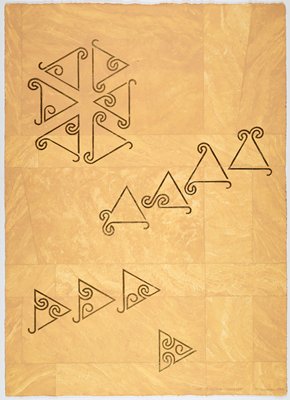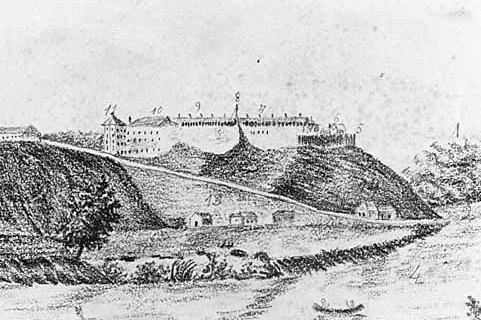The painted aluminum zigzag images on the glass windscreens represent maple seeds (whirlybirds or helicopters) as an homage to the local Native Americans that collected maple sap as a source of sugar.

Philip Larson is a sculptor and printmaker.
Trained as an art historian, Philip Larson turned to art-making when he was 29. A passionate devotee of Chicago and Prairie School architecture, his sculptures and prints frequently display a geometrical patterning reminiscent of the architectural ornamentation that adorns buildings of Louis Sullivan, Frank Lloyd Wright and their followers.
Larson has also created a piece on display at the Walker Art Center’s Sculpture Garden titled, Six Crystals.

Triskelon (The 14 Glyphs), 1994
The junction of the Mississippi and Minnesota rivers is a place of major social, cultural and historical significance to all people who have inhabited the region, a place whose history evokes both pride and pain. It is a place of cultural importance to many Dakota people as a historical gathering place, the site of the B'dote creation story, and as a place of Dakota internment and exile after the U.S.-Dakota War of 1862.

This area was also the crossroads of two major river highways of the fur trade, one of the most lucrative businesses during the 19th century. After the War of 1812, the U.S. government established its strategic presence at the river junction with the arrival of military forces and an Indian agent, whose goals were to promote and protect the interests of the United States in the region's fur trade and to gain the friendship and cooperation of American Indian communities. The establishment of the fort and Indian Agency became a foothold of U.S. expansionism in the territory that would become Minnesota.
Located on top of the bluff overlooking the river junction, Fort Snelling served the U.S. military for more than 120 years, through conflicts at home and abroad, and thousands of Minnesotans received their first taste of military service within its walls. By the late 20th century, its national cemetery became the site of the final resting place for more than 180,000 men and women who served in the armed forces.

Fort Snelling, Seth Eastman, 1833, MHS collections.
This information was taken from the official Fort Snelling website. To learn more about Fort Snelling, check out this website: Historic Fort Snelling